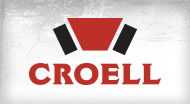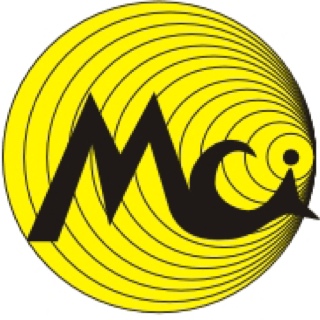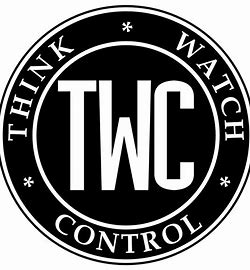Information
-
Conducted on
-
Location
1.0 - Previous Inspection
-
1.1 - Has The Last Inspection Been Reviewed?
-
1.2 - Are There Any Outstanding Actions?
2.0 - General Condition
-
2.1 - Is the OSHA poster up to date? Standard 1910.2
-
2.4 - Is the entrance to the yard and office clean and tidy? Company Standard
-
2.5 - Are aisles marked and kept clear? Standard 1910.22 (b)(2) & (a)(1)
-
2.6 - Are materials in process and finished product neatly stored? Standard 1910.141 (a)(3)
-
2.7 - Are rubbish containers provided and used (waste baskets in a safe position)? Standard 1910.141 (a)(4)
-
2.8 - Is lighting and ventilation adequate for intended process? Standard 1910.94
-
2.9 - Is the overall condition of the building and maintenance good? Company Standard
-
2.10 - Are the clean up procedures adequate? Standard 1910.22(a)(1)
-
2.12 - Is good house keeping maintained? Standard 1910.22(a)(1)
-
2.13 - Are new employees trained on safety procedures? Standard 1910.508 (a)(2)
-
2.14 - Is the Storm Water Plan available, and current? EPA Standard
-
2.15 - Is the shop and yard free of oil stains. EPA Standard
3.0 - Machinery
-
3.1 - Are machines kept clean? Company Standard
-
3.2 - Is machine area kept clear of obstructions? Standard 1910.22(a)(2)
-
3.3 - Are machine guards in place on all grinders, saws, etc., and in good condition? Standard 1910.212
-
3.4 - Are repairs or adjustments prohibited while operating machine? Standard 1910.213(b)(5)
-
3.5 - Do only authorized personnel operate equipment? Company Standard
-
3.6 - Do machine operators wear proper clothing? Standard 1910.132
-
3.7 - Are potential hazards blocked with barriers to prevent injury? Standard 1910.212(a)(1)
-
3.8 - Is compressed air used for cleaning reduced to 30 psi.? Standard 1910.242(b)
-
3.9 - Is stationary machinery securely anchored to prevent moving? Standard 1910.212(b)
-
3.11 - Are all powered and hand tools in good condition and free of defects? Standard 1910.242
-
3.12 - Is cut-off waste removed and stored properly?
-
3.13 - Are emergency shut off switches within easy reach of the operator? Standard 1910.(b)(1)
-
3.14 - Are drip pans in place to prevent spills? IPS Standard
-
3.15 - Is lighting adequate? Standard ANSI A11.1-65
-
3.16 - Is noise level controlled? Standard 1910.95(b)(1) Table G-16
-
3.17 - are gas bottles secured? NFPA 55-6.6
4.0 - Electrical
-
4.1 - Are extension cords in good shape, grounding plug in place, insulation in good shape and free of any tape? Standard 1910.334(a)(2)(ii)
-
4.2 - Is electrical wiring and equipment well supported and protected from mechanical wear? Standard 1910.334(a)(2)(I)
-
4.4 - Any broken plugs, sockets, or switches? Standard 1910.334(a)(2)(ii)
-
4.5 - Is fixed electrical equipment Grounded? Standard 1910.404(f)(1)(v)
-
4.7 - Are inside breaker switches labeled? Standard 408.4(A)
-
4.8 - Are all unused openings (including conduit knockouts) in electrical enclosures and fittings closed with appropriate covers, plugs or plates?<br>Standard NEC 110.12(A)<br>
-
4.9 - Is access to control boxes kept clear? Minimum 36" in front of panels. Standard NEC 110.36
-
4.11 - Do Ground-Fault Circuit Interrupters (GFCI's) pass first test using push button built into the outlet? Standard UL943-20.1
-
4.12 - Are electrical receptacles located within 3 feet of a sink, exterior door, out door receptacles, and metal work surfaces equipped with GFCI's? Standard NEC 210.52(D)
-
4.14 - Extension cords not hanging from metal structures; piping, nails, hooks, ladders, or scaffolds? Standard 1910.334(a)(1)
-
4.15 - No extension cords pass through walls, ceilings, doors, or windows? Company Standard
-
4.16 - Extension cords are not subject to vehicle traffic and/or equipment traffic? Company Standard
-
4.17 - Are extension cords across walkways? Standard 1910.22(b)(1)
-
4.18 - Are extension cords free of splices or tape? Standard 1926.405(g)(2)(iii)
-
4.19 - Are portable power tools in good condition and grounded or of the double insulated type? Standard 1915.132(a)
-
4.20 - are all recepticals labeled with the voltage? Standard NEC 406.12 & 406.4(D)(5)
5.0 - Fire Prevention and Flammable Materials
-
5.1 - Are oxygen and acetylene bottles properly stored and chained? Standard 1910.253(b)(2)(ii)
-
5.2 - Are compressed gas cylinders stored 20 ft. away from heat sources. Standard 1910.253(b)(4)(iii)
-
5.3 - Are oxygen and acetylene stored 20 ft. apart or by a 5 ft. high, 1/2 hour rated firewall? Standard 1910.253(b)(4)(iii)
-
5.4 - Are fire extinguishers clearly marked and easily accessible? Standard 1910.157(c)(1)
-
5.5 - Are fire extinguishers checked by a third party annually and tagged? Standard 1910.157(e)(3)
-
5.6 - Are extinguishers readily available near welding, painting, and oily clean up areas? Standard 1910.157(c)(1)
-
5.7 - Are stored items kept from accumulation that could cause a hazard (i.e. tripping,fire,explosion or pest harborage)? Standard 1910.176(b)
-
5.8 - Are "No Smoking" signs displayed and enforced in designated areas? Standard 1910.126(a)(3)
-
5.10 - Are Flammables in approved flammable cabinets? Standard 1910.152(b)(2)(iii)
-
5.12 - Are all soiled rags stored in approved metal containers with gravity type closing lids? Standard 1910.252(e)
-
5.13 - Are fire exits kept clear, accessible and clearly marked? Standard 1910.37(a)(3) & 37(b)(2)
-
5.14 - Do fire exits open easily from the inside? Standard 1910.36 (d)(1)
-
5.15 - Are all doors marked with "exit" or "not an exit" signs? Standard 1910.37(b)(2) & 37(b)(5)
-
5.16 - Are static discharge wires used when transferring flammables from one container to another? Standard 1910.106(e)(6)(iii)
-
5.17 - Are attic and platform storage areas clean and free of trash? Standard 1910.176(b)
-
5.18 - Are propane bottles stored outside, have identifying signs, and secure? Standard NFPA-58-8.4.1.2
6.0 - Material Handling and Storage
-
6.1 - Are conveniently placed racks and bins for small parts provided? Company Standard
-
6.3 - Is adequate clearance provided for material handling equipment and are clearance signs posted? Standard 1910.176(e)
-
6.4 - Do lift trucks have rollover protection, canopy guard, horn, back up alarm, and proper lighting? Standard 1910.178(p)(1)
-
6.5 - Are hand and powered trucks in good condition? Standard 1910.178(q)(1)
-
6.6 - Are hazardous chemicals handled with proper PPE when required? Standard 1910.120 APP B
-
6.7 - Do all employees use proper lifting methods? Company Standard
-
6.8 - Are lift truck riding guidelines followed? Standard 1910.178(m)(2)
-
6.9 - Are fork lift compressed gas cylinders inspected to insure they are in good condition? Standard 1910.101(a)
-
6.11 - Are fork lift operators properly trained and records on file? Standard 1910.178(l)
7.0 - First Aid
-
7.1 - Is a trained first aider available on site? Standard 1910.151(b)
-
7.2 - Is first aid given promptly and by a first aider for minor injuries? Standard 1910.151(a)
-
7.3 - Are company emergency numbers posted along with the incident reporting protocol map? Company Standard
-
7.4 - Are CPR kits and barriers available? Standard 1910.1030(d)(3) & 1910.151(b)
-
7.5 - Is there a practical first aid manual on location? Company Standard
-
7.6 - Are special medical examinations current (i.e. Respirator or any examination that may be designated)? Standard 1910.134 APP. C
-
7.7 - Are first aid cabinets and contents clean and orderly? Standard !910.266(d)(2)(iv)
-
7.8 - Are contents regularly checked? Company Standard
-
7.9 - Are cabinet clearly labeled? Company Standard
-
7.10 - Are cabinets easily accessible? Company Standard
-
7.11 - Are Biohazard kits available? Standard 1910.1030(d)(4)(iii)[B]
8.0 Safety Equipment
-
8.1 - Is personal protective equipment maintained in a sanitary and reliable condition?
-
8.2 - Is face and eye protection used when there is a reasonable probability of injury (i.e. welding, cutting, grinding, etc.)?
-
8.4 - Is foot protection used when there is a probability of injury?
-
8.5 - Is respiratory protection used where there is a danger from dust, fog fumes, smoke, vapors, etc.?
-
8.6 - Are employees using hearing protection in required areas or when exposed to high levels of noise?
9.0 Walkways
-
9.1 - Are isles and passageways kept clear? Standard 1910.22 ( a)(1)
-
9.2 - Are isles and walkways marked? Standard 1910.22(b)(2)
-
9.3 - Are wet floors covered with non-slip a material? Standard 1910.22(a)(2)
-
9.4 - Are holes in the floor, sidewalk or other walking surfaces repaired properly, covered or otherwise made safe? Standard 1910.22(c)
-
9.5 - Are materials or equipment stored in a such a way that sharp projectives will not interfere with the walkway? Standard 1910.22(a)(3)
-
9.6 - Are spills cleaned up immediately?
-
9.7 - Are changes in elevation readily identifiable?
10.0 - Stairs and Stairways
-
10.1 - Are hand rails on stairs with 4 or more risers? Standard 1910.23(d)(1)
-
10.4 - Are the steps designed or provided with a material that makes them slip resistant? Standard 1910.24 (f)
-
10.5 - Are the handrails located between 30 and 34 inches above the leading edge of the stair tread? Standard 1910.23(e)(2)
11.0 - Hazard Communication
-
11.1 - Is there a "Right to Know" station with a list of the chemicals in the workplace? Standard1910.1200(e)(1)(i)
-
11.2 - I there a written hazard communication program? Standard 1910.1200(e)(1)
-
11.3 - Are MSDS sheets readily available to employees? Standard 1910.1200(g)(8)
-
11.4 - Is there an employee training program for hazardous substances? Standard 1910.1200(h)(3)
-
11.6 - Are containers labeled properly? Standard 1910.1200(f)(9)
-
11.7 - Do chemical storage areas have adequate containment? Standard EPA 40 CFR 264.175
-
11.8 - Are eye wash stations easily accessible? Standard 1910.151(c)
13.0 - Outside - Environmental
-
13.1 - Materials and stored equipment covered?
-
13.2 - Drum storage area under cover?
-
13.3 - All drums have plugs in holes?
-
13.4 - Are empty drums stored on their sides so rain water can not collect in them?
-
13.5 - Are empty drums disposed of in a timely manner?
-
13.7 - Are surface areas clear of potential pollutants and oil stains?
-
13.8 - Spill kits on site, stocked and ready for use?
-
13.9 - Lids on dumpsters closed and in good condition?
-
13.10 - Is metal dumpster free of material that are covered in oils or chemicals?
-
13.11 - Is the wash bay free of garbage and debris?
Additional items
-
Add signature
-
Add signature











